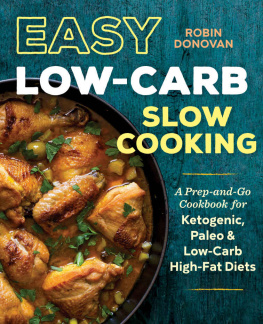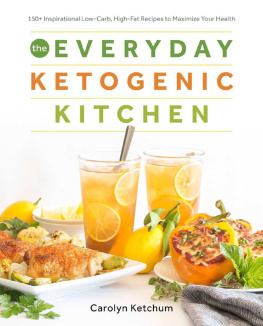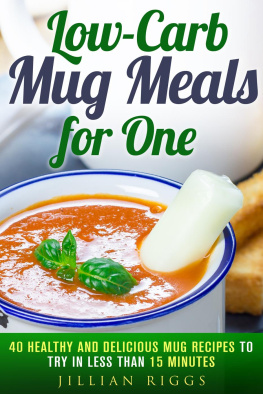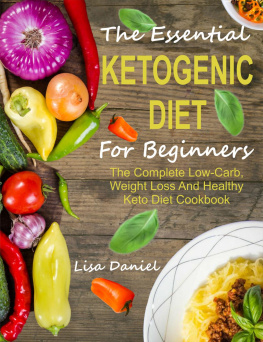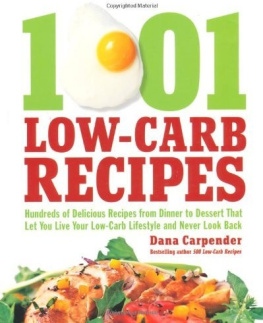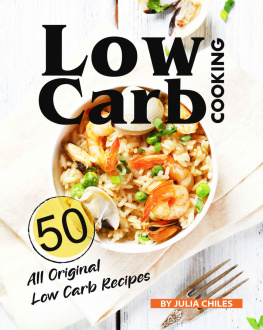Cooking by the RULED Book
Breakfast
Lunch
Dinner
Dessert
Sides
Snacks
An Introduction to Keto
What is Keto?
A keto diet is well known for being a low carb diet, where the body produces ketones in the liver to be used as energy. Its referred to as many different names ketogenic diet, low carb diet, low carb high fat (LCHF), etc. When you eat something high in carbs, your body will produce glucose and insulin.
Glucose is the easiest molecule for your body to convert and use as energy, so it will be chosen over any other energy source.
Insulin is produced to process the glucose in your bloodsteam, by taking it around the body. Since the glucose is being used as a primary energy, your fats are not needed, and are therefore stored.
Typically on a normal, higher carbohydrate diet, the body will use glucose as the main form of energy. By lowering the intake of carbs, the body is induced into a state known as ketosis. Ketosis is a natural process the body initiates to help us survive when food intake is low. During this state, we produce ketones, which are produced from the breakdown of fats in the liver. The end goal of a properly maintained keto diet is to force your body into this metabolic state. We dont do this through starvation of calories, but through starvation of carbohydrates.
Our bodies are extremely adaptive to what you put into it when you overload it with fats and take away carbohydrates, it will begin to burn ketones as the main energy source.
What Do I Eat?
To start a keto diet, you will want to plan ahead. That definitely means having a viable diet plan ready and waiting. What you eat really depends how fast you want to get into a ketogenic state. The more restrictive you are on your carbohydrates (less than 15g per day), the faster you will enter ketosis. Normally, anywhere between 20-30g of net carbs is recommended for every day dieting but the lower you keep your glucose levels, the better the overall results will be.
If you need ideas for food, there are plenty of keto recipes for you to choose from. You might be asking, Whats a net carb? Its simple really! The net carbs are your total dietary carbohydrates, minus the total fiber. Lets say for example you want to eat some broccoli (1 cup) seriously my favorite and most delicious vegetable out there.
- There are a total of 6g carbohydrates in 1 cup.
- Theres also 2g of fiber in 1 cup.
- So, we take the 6g (total carbs) and subtract the 2g (dietary fiber).
- This will give us our net carbs of 4g.
Your nutrient intake should be something around 70% fats, 25% protein, and 5% carbohydrate.
You want to keep your carbohydrates limited, coming mostly from vegetables, nuts, and dairy. Dont eat any refined carbohydrates such as wheat (breads, pastas, cereals), starch (potatoes, beans, legumes) or fruit.
Dark green and leafy is always the best choice. Most of your meals should be a protein with vegetables, and an extra side of fat.
Orange chicken, with broccoli and cheese. Keto Beef Stew, and a side of spinach sauted in olive oil. If youre finding yourself hungry throughout the day, you can snack on lots of different things - or you can save your extra room for dessert after your meal!
If you'd like to read more on the ketogenic diet, feel free to visit my website at www.ruled.me

Microwave Eggs Benedict
Yields 1 Eggs Benedict
Per Serving: 526 Calories, 52.5g Fat, 3.3g Net Carbs, 18.7g Protein
- 1 Tbsp. Butter
- 1 Large Egg
- 1/4 tsp. Baking Powder
- 1 1/2 Tbsp. Almond Flour
- 1 1/2 Tbsp.
Flax Seed Meal
- 1/4 tsp. Apple Cider Vinegar
- 1 drop Stevia
Sauce
- 1 Egg Yolk
- 1/8 Lemon, Juiced
- 1 pinch Salt
- 1 pinch Cayenne Pepper
- 1 1/2 Tbsp. Salted Butter, melted
Filling
- 1 Large Egg
- 1/3 cup Water
- 1/2 tsp. Apple Cider Vinegar
- 1 Slice Canadian Bacon
1. Mix together 1 Tbsp. 2. 2.
Microwave for 75 seconds. When it comes out of the microwave, flip it upside down and tap the mug over a plate to remove the bread. 3. Microwave the Canadian bacon on a paper towel for 1-2 minutes (as per instructions on package). 4. Separate 1 egg and put the yolk in ramekin, discarding white.
Add cayenne pepper. 5. In another ramekin, microwave 1 1/2 Tbsp. butter for 10-15 seconds until melted. 6. 7. 7.
Microwave the egg with a plate on top for 50 seconds at 80% power. 8. Cut the bread into a muffin shape; add the Canadian bacon and egg. 9. Slowly pour butter into the egg yolk while stirring it constantly. 10. 10.
Pour the sauce over the egg, Canadian bacon, and muffin. 
Nutty Breakfast Bars
Yields 4 Bars
Per Serving: 421 Calories, 40.5g Fat, 4g Net Carbs, 10.5g Protein
Ingredients
- 1/2 cup Walnuts
- 1/2 cup Pistachios
- 1/4 cup Coconut Oil
- 1/4 cup Peanut Butter
- 1/4 cup Flax Seed Meal
- 1/4 tsp. Almond Extract
- 7 Drops Liquid Stevia
1. Crush the nuts in a Ziploc bag using a rolling pin. 2. 3. 3.
While the nuts are toasting, put the coconut oil and peanut butter into a microwave safe container. 4. Microwave the oil and peanut butter for 25 seconds until it is melted. 5. Mix the oil and peanut butter together with the Stevia and almond extract. 6.
Once the nuts are toasted, lay them into a 9x4 dish. 7. Sprinkle 1/4 Cup Flax over the nuts, and then pour the peanut butter and oil mixture on top of the nuts. 8. Put the mixture into the freezer for a minimum of 4 hours, so that it can turn solid. 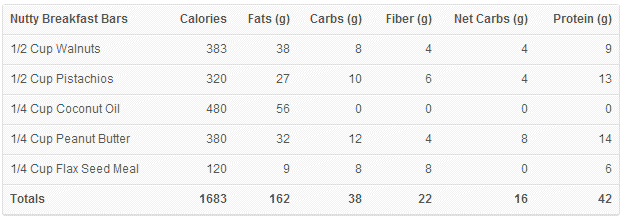
Vanilla Butter Pound Cake
Yields 12 Slices
Per Serving: 224 Calories, 24g Fat, 1.4g Net Carbs, 4.6g Protein
Ingredients
- 1/2 lb.



